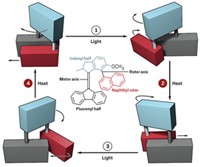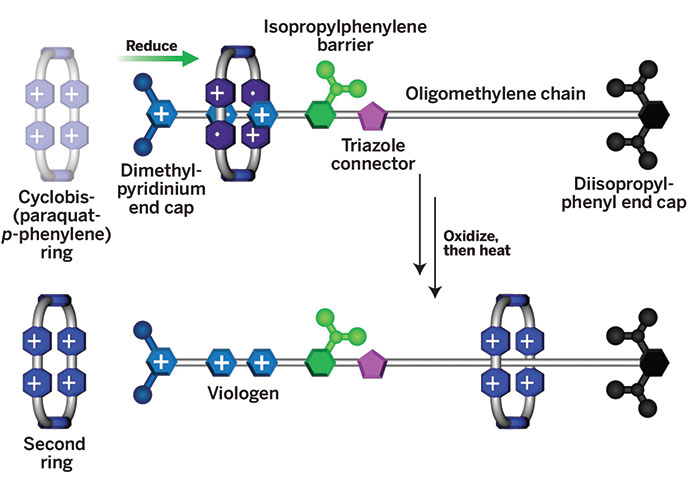Advertisement
Grab your lab coat. Let's get started
Welcome!
Welcome!
Create an account below to get 6 C&EN articles per month, receive newsletters and more - all free.
It seems this is your first time logging in online. Please enter the following information to continue.
As an ACS member you automatically get access to this site. All we need is few more details to create your reading experience.
Not you? Sign in with a different account.
Not you? Sign in with a different account.
ERROR 1
ERROR 1
ERROR 2
ERROR 2
ERROR 2
ERROR 2
ERROR 2
Password and Confirm password must match.
If you have an ACS member number, please enter it here so we can link this account to your membership. (optional)
ERROR 2
ACS values your privacy. By submitting your information, you are gaining access to C&EN and subscribing to our weekly newsletter. We use the information you provide to make your reading experience better, and we will never sell your data to third party members.
Synthesis
Molecular Pas De Deux
Photoreactive host molecule mechanically twists guest compound
by Bethany Halford
March 27, 2006
| A version of this story appeared in
Volume 84, Issue 13

It's chemistry that could make Chubby Checker sing, "Let's do the twist." A molecular device that can twist a noncovalently bound guest molecule has been developed by chemists at the University of Tokyo (Nature 2006, 440, 512).
The design concept behind Takahiro Muraoka, Kazushi Kinbara, and Takuzo Aida's system is an advance for so-called molecular machines, allowing controlled, reversible intermolecular movement. A similar approach, the scientists say, could be used to link more elaborate, interlocked molecular devices.
"This is a clever design of a molecular system in which several mechanical functions are coupled, and controlled motion in one part is transmitted as rotary motion in a bound guest molecule," says Ben L. Feringa, a chemistry professor at the University of Groningen, in the Netherlands. "It is a beautiful example of the rapid progress made in the construction of molecular motors and nanomachines," he adds.
The device features a central ferrocene unit attached to an azobenzene handle on one side and to two zinc porphyrin moieties on the other. The zinc ions in this host molecule bind a bidentate guest compound. Shining light on the system begins a Rube Goldberg-like sequence of movements in the host that eventually twists the guest molecule, according to the Tokyo chemists.
In the presence of ultraviolet light, the azobenzene isomerizes from trans to cis, stretching one end of the host molecule in the process. This induces a scissoring movement in the rest of the compound with the ferrocene acting like a pivot. The scissoring of the porphyrins twists the guest molecule like a rotor. Visible light reverses the process.
There are still challenges to address with the system, Feringa points out, such as how to harvest the motion and how to perform useful work with the molecules. But he adds that the system's "joined operation of several mechanical functions is a significant step forward."






Join the conversation
Contact the reporter
Submit a Letter to the Editor for publication
Engage with us on Twitter